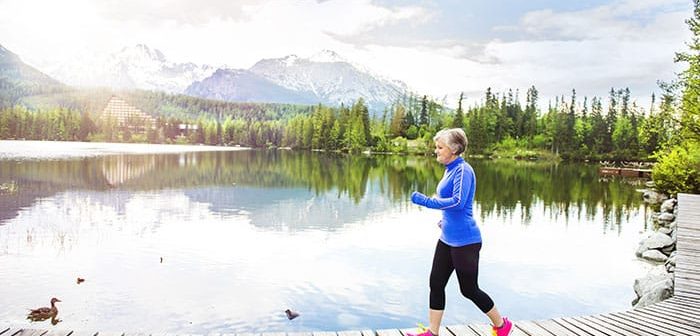We do a lot for the people we care about, especially those who spent their early life caring for us. We make sure they eat right, exercise, spend quality time with friends and family, and visit their doctor. We do what we can to handle their changing needs, but one slip or misstep can make their world come crashing down. Accidental falls, or unintentional injuries, are the fourth leading cause of death in the U.S. The reasons vary, but experts attribute these injuries to diminished balance brought on by medications, poor vision, and the lack of exercise, namely strength training.
There are a number of safety measures a caregiver can take to reduce the risk of injury within their loved one’s home, such as lighting and removing clutter, but older adults can also use daily exercise to improve their sense of balance to better navigate the bumpy road ahead.
Here are five everyday tips to practice and implement to prevent falls.
- Squats
- Leg lifts
- Regular eye check-ups
- Take your vitamins
- Simplify your home
Squats
Did you know that squatting is the most primitive movement pattern known to mankind? In fact, our ancestors used to perform this type of movement in daily activities such as harvesting, hunting, gathering, cooking, eating, etc.
Scott Dagenais, rehab director at Palm Terrace Healthcare and Rehab Center, advises grabbing a chair to hold onto for balance when performing this movement. The first step is to stand shoulder width apart and simply lower yourself down while engaging the core. Make sure to squeeze the glutes, keep your head up, and hold for a couple of seconds. To take the exercise up a notch, raise your toes up and then back down. Repeat this 10 times for three sets. This exercise helps with independent balance as it increases quadriceptive and glute strength.
Single leg stance
Movement can become a bit shaky as we age and especially as we move from side to side or reach up to grab something. The single leg stance is another exercise to improve balance to prevent falling in the elderly. This movement begins in the same stance as the squat, however, instead of dipping down, you lift your leg up to the side and then bring it back. Make sure to squeeze the glute, hold it for a few seconds, repeat, and alternate legs. As you become more advanced, try to close your eyes!
Regular eye check-ups
The Vision Council of America reports that approximately 75 percent of adults use some form of vision correction. According to the American Foundation for the Blind (AFB), “A rapidly increasing proportion of the aging population experiences eye problems that make simple daily tasks difficult or impossible, even when wearing glasses or contact lenses. Severe eye problems are not just a matter of ‘getting older.’ The risk of severe eye problems has been found to increase significantly with age, particularly in those over age 65.”
Make sure your loved one has a current prescription as directed by a doctor. Remember that tint-changing lenses can be dangerous, so be aware of the changes in the environment from a darkly-lit building to a bright, sunny day. By pausing and waiting for the lens to adjust, a bump or fall can be avoided.
Take your vitamins
By keeping your bones strong, you stay standing. The two key nutrients to defy osteoporosis are Calcium and vitamin D. Calcium is important because our bodies cycle calcium through the bones to keep them strong, while vitamin D aids your body in absorbing calcium and encourages bone growth. Health.com advises that adults up to the age of 50 should get 1,000 milligrams of calcium and 200 international units (IUs) of vitamin D a day. Adults over 50 should get 1,200 milligrams of calcium and 400-500 IUs of vitamin D.
Simplify your home
The older we get, the more items we tend to accumulate and sometimes it can be incredibly difficult to part with items that hold sentimental value. One of the things you can do to help your loved one clean up his or her home is to remove things that could easily be tripped over. This includes a throw rug, low-sitting bench, room heater, or a raised doorway threshold. Another risky item would be an electrical cord or any other kind of clutter, such as shoes.
Sometimes it takes a good fall to really know where you stand, except when you’re 65! By encouraging a daily exercise routine, monitoring vision, eating right, and removing dangerous clutter and other hazards from the home, your loved one will be ready to tackle whatever lies on the road ahead by staying on the path to good health and avoiding accidental falls.




